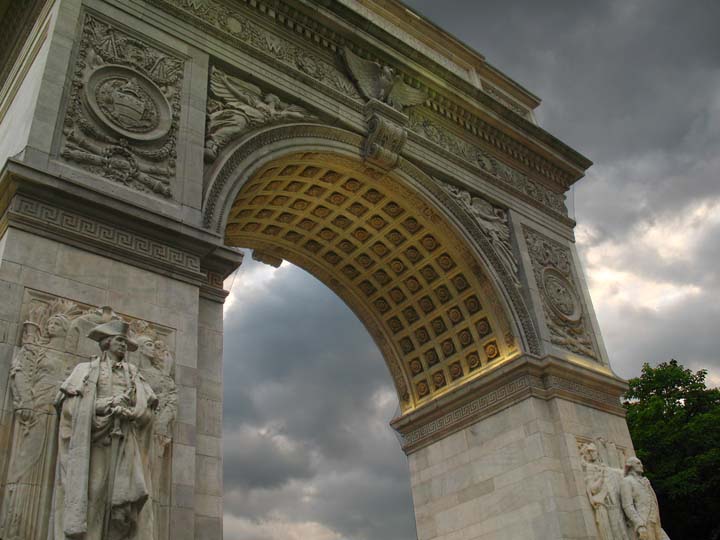Greenwich Village Generals

This week, the Fourth of July holiday has us here at Off the Grid thinking about the connections the Village has to the Revolutionary War. While the Village remained a pastoral suburb of the city proper during the war, there are some reminders of the fight for independence in the neighborhood.

Probably the greatest reminder of the fight for independence is the Washington Square Arch in Washington Square Park, erected between the years 1890 and 1892 to replace the popular wooden arch erected in 1889 to commemorate the centennial of Washington’s inauguration, which took place at Federal Hall here in New York when our city was, briefly, the nation’s capitol. The architect Stanford White modeled both structures on the Arc de Triomphe in Paris. While the arch was built to commemorate Washington’s inauguration as president, one of the arch’s two statues on its north face remind us that Washington led the Continental Army during the Revolutionary War. These two statues were installed in 1918; Washington as Commander-in-Chief, Accompanied by Fame and Valor by Hermon MacNeil and Washington as President, Accompanied by Wisdom and Justice by Alexander Stirling Calder.
Just south of the park, six streets serve as a reminder of the War for Independence as well: MacDougal, Sullivan, Thompson, Wooster, Greene, and Mercer Streets were all named for generals in the war. Alexander McDougall—his father spelled the name as the street is spelled today—was a New York merchant who eventually succeeded Benedict Arnold in command of defenses of West Point. The other generals include: William Thompson, from Pennsylvania; David Wooster, from Connecticut; Nathanael Greene, a Rhode Island Quaker; and Hugh Mercer, a Scottish-born surgeon who advised Washington to undertake the successful march on Princeton. Joyce Gold writes in her walking guide From Trout Stream to Bohemia that the streets were named just after the war to commemorate these war heroes.
So the next time you take a stroll through the park or down MacDougal, Sullivan, Thompson, Wooster, Greene, or Mercer Streets, take a minute to remember our fight for independence.
